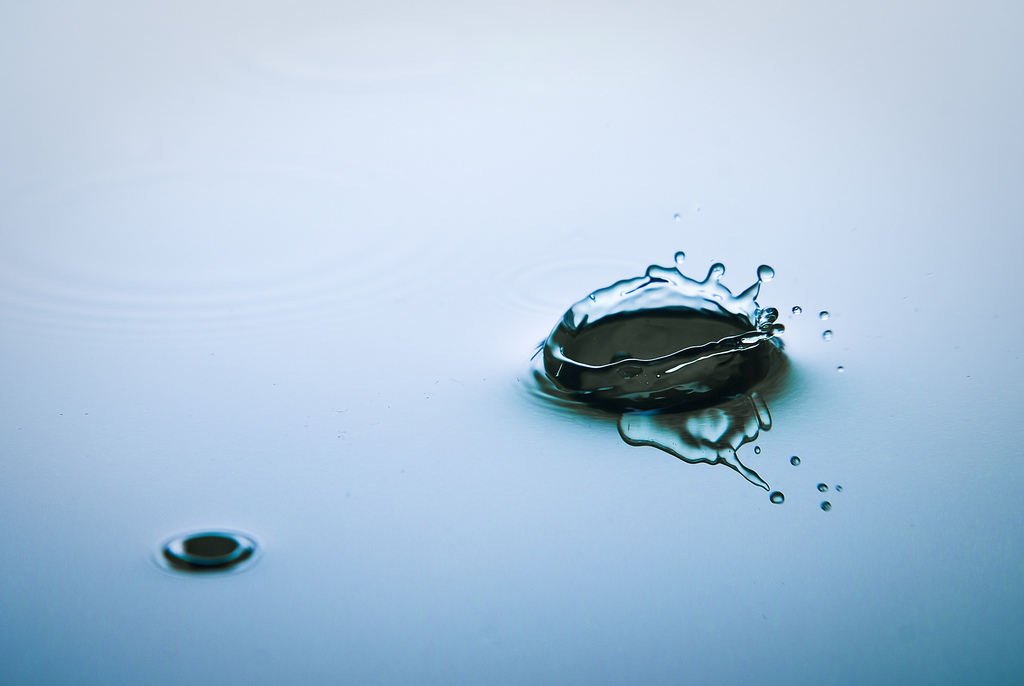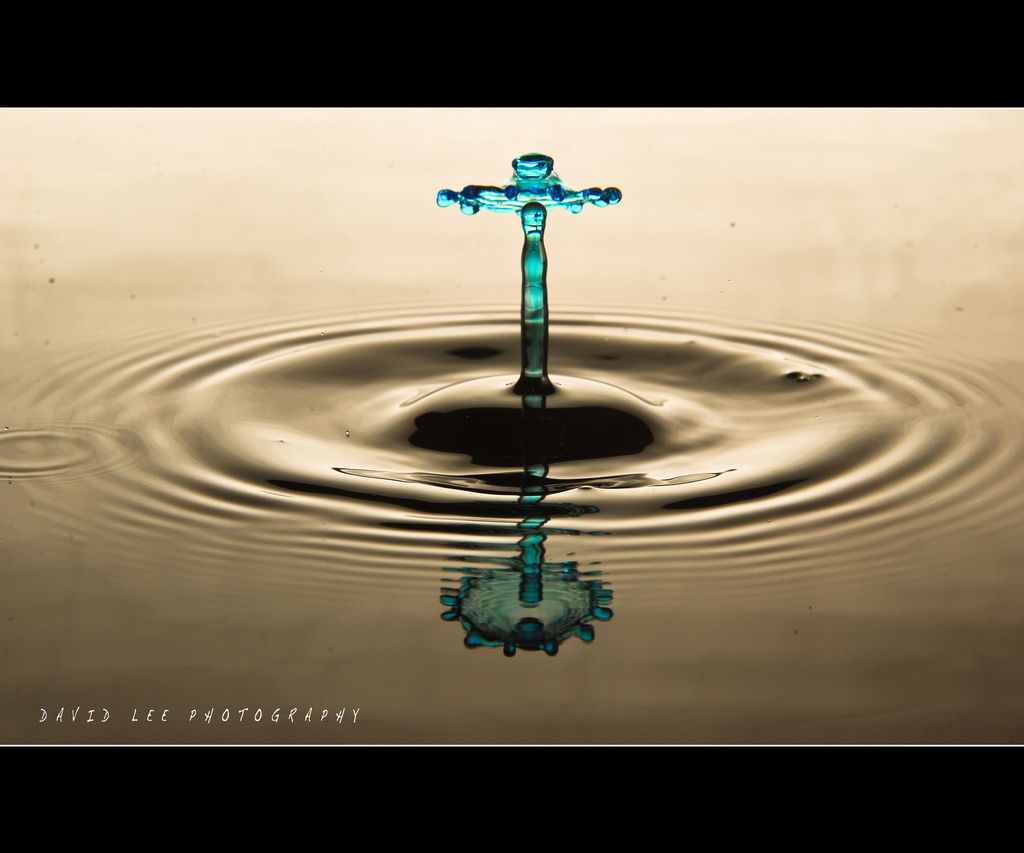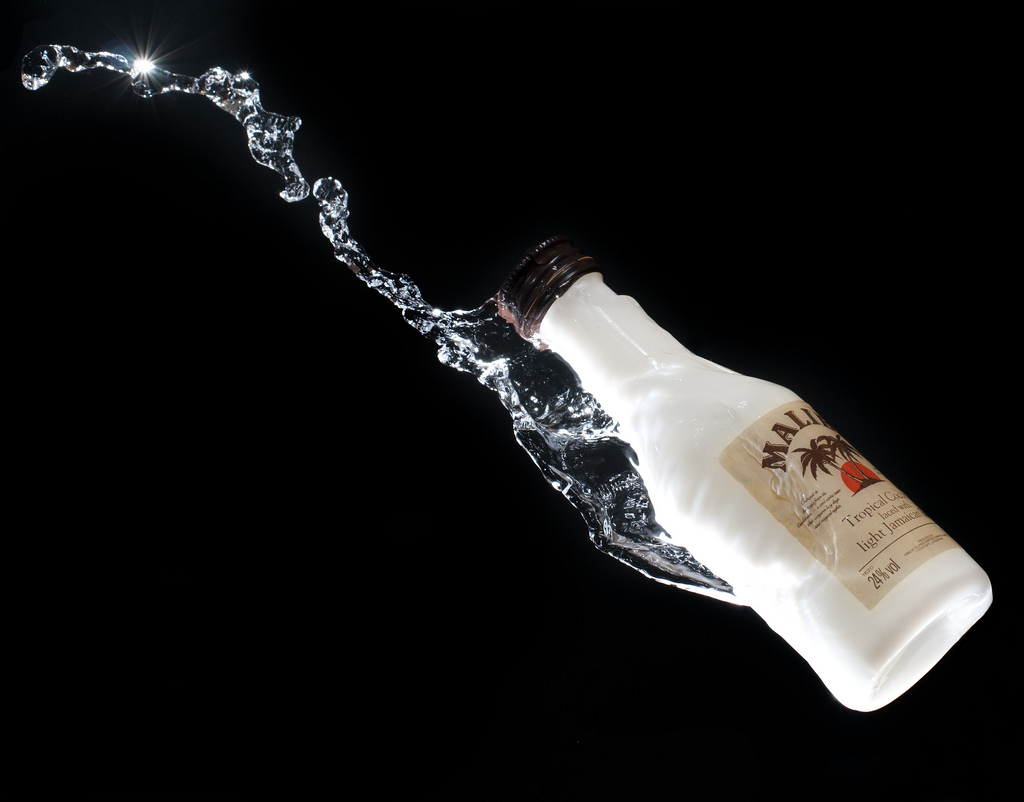Macro water drop photography? - 1
First off, I have a Nikon D200, with a 3rd party external flash that I can use off-camera with a flash sync cord.
What lens should I use?
-50mm f/1.4
-18-55mm
-70-300mm
-(I can do the 'reverse lens' macro w/ the 50mm and 70-300, but I think it might be too close, even @70mm)
My main goal is to get stuff like this:  or this:
or this: 
where it's all just very "clean" lighting.
My first question is, how should I set up the lighting?
-I have that external flash with a sync cord (10ft), with a mini-softbox. So where should I place that?
-I also have a reflective disk w/ silver, white, and gold sides. The 'body' of the reflector can also be used as a diffuser disk. When/where/how should I use this?
My next question is what should I use for water dropping?
-I've tried many things… Turkey baster, cups, etc. But I can't get a consistent drop flow.
Added (1). Thanks Lynnzee!
The only problem with that, is that I only have a source of light from the single flash.
Should I take the reflective disk sleeve and tack it to something else and use the frame as a diffuser?
Ok, so for the lens, I think that really any lens would work! If it were me, I would just use the 18-55mm. If it doesn't work for you try another one! That is that is the great thing about photography! You can change it up so much!
I just completed this project and I had a good time with it! I would place the softbox on one side of your water. Then I would place the reflector behind the water, and have a flash coming from the opposite side side of the softbox, reflecting back to the reflector. That way, you get all of the water drop lit! And, again, if you take a few shots and don't like what you have, then switch it up! With studio shoots like this, you can do what ever you want!
David Parks is AWESOME! I'm totally in love with his photos! Don't take it to hard if your photos don't come out exactly like Davids… Oh wait! I just remembered! He has a shot of his water drop set up! Let me go look!
Ok, I'm back! Here is the link! I could have just posted the link and it would have saved me some typing! To late!
For the drops there are several things you can try, some being more successful then the others. The one I like the best, is poking a small hole in the cap of a water bottle. If you use a safety pin or something like that, you can get a small enough hole that a drop at a time will come out, but you can poke it a few more times to make it bigger and by doing that you can change the speed of the drops! Really works!
Another thing that you can try is filling up a balloon with water. The trick to this though, is to make sure NOT to fill it up all the way. If you fill it to the top, then it will just spray out, but if you fill it like half way, tie it, and then poke the hole you should get a stead drip.
Using an eye dropper works, but that takes some practice and takes quiet a bit longer to get "THE" shot. If push comes to shove, you could always set up under a sink. I have done that and it works just as well!
Hope I helped! And Good Luck with the shots!
First of all, you don't light the water with the flash, you light the background - that will give you bounced flash in effect.
You won't need the softbox - the b/g will act as a larger light source and some specular highlights on the water will add sparkle.
You don't want a close focusing lens necessarily - don't forget there will be splashes! Better to have the lens a fair way away & use the telephoto - this keeps the gear drier!
By the way, if you want to fire that flash wirelessly, I can recommend a great set of radio triggers - RF602's - about £27.
Anyway, there's a good setup video on the Strobist blog;
http://strobist.blogspot.com/2009/05/how-to-photograph-water-drops-with-one.html
and here's a couple of my shots using this technique (one drop shot & one slightly different). For drop shots I use a paper cup with a pin hole in. The pin can be replaced during breaks in shooting.

